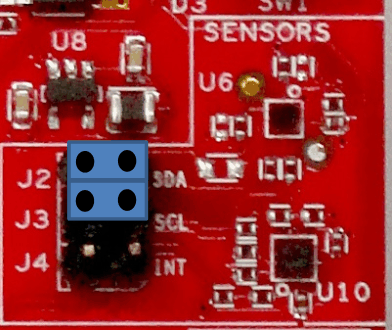SWRU372C June 2014 – March 2020 CC3200
- CC3200 SimpleLink™ Wi-Fi® and Internet of Things Solution With MCU LaunchPad™ Hardware
- Revision History
2.4.2 I2C Connections
The board features an accelerometer and a temperature sensor for the out-of-box demo. These are connected to the I2C bus and can be isolated using the jumpers provided. By removing J2 and J3, the accelerometer and the temperature sensors are isolated from the I2C bus. This also removes any pullup resistor from the I2C bus.
Figure 5. I2C Connections
